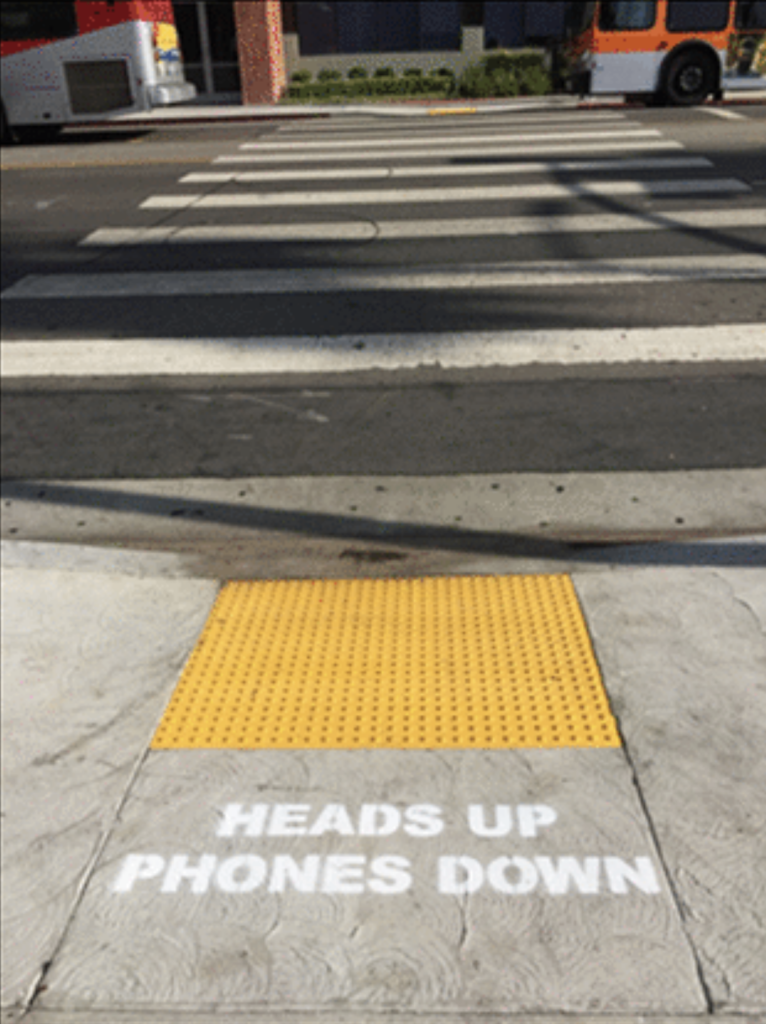We have all seen those videos of people so focused on their cell phone that they walk into walls or mall fountains. These accidents have a name, distracted walking, and are not limited to YouTube. Most cell-phone-owning adults report using their phone while walking or have been bumped into by someone doing the same. Comedians, advertising agencies, and politicians have taken notice.
In New York, an improv group impersonated department of transportation employees and helped distracted walkers navigate busy sidewalks. In Belgium, a cell phone company created dedicated texting lanes as part of a marketing stunt. Legislators in several states take distracted walking more seriously and introduced laws to financially penalize the behavior.
Two studies in virtual environments found that phone conversations, texting, and using the internet can increase the likelihood of an individual being hit by a vehicle.
Distracted walking can lead to far more serious accidents than being bumped into. Two studies in virtual environments found that phone conversations, texting, and using the internet can increase the likelihood of an individual being hit by a vehicle. In both studies, distracted participants were more likely to miss safe opportunities to cross the street and failed to look both ways before entering an intersection. Experts believe that these behaviors contribute significantly to the 6,000 pedestrians killed in motor vehicle accidents annually. Few interventions exist to address this serious public health concern.
One potential option may be to paint a gentle reminder directly on the sidewalk. Researchers from the Children’s Hospital of Los Angeles were among the first researchers to test the effect of a simple sidewalk message in a real world – as opposed to virtual – environment. In Los Angeles, they painted “Heads Up, Phone Down” at four intersections in two locations. Over four months, researchers observed the walking patterns of adults outside a hospital and youth at a middle school and nearby high school. Data was collected at fixed times during the morning and evening rush-hours.

Photo via Barin, E. N., Mclaughlin, C. M., Farag, M. W., Jensen, A. R., Upperman, J. S., & Arbogast, H. (2018). Heads Up, Phones Down: A Pedestrian Safety Intervention on Distracted Crosswalk Behavior. Journal of Community Health, 43(4), 810-815.
After one week, both adults and children engaged in less distracted walking. But the effect decreased after four months.
There was one behavior for which the painted sidewalks remained effective even after four months: adults texted less. The researchers propose two possible explanations. First, adults are more likely understand the risks of distracted walking. Second, adults remember life before cell phones and may find not using one easier than younger people do.
Painted sidewalks are a simple, low-cost way to reduce distracted crossings at busy intersections. But given their lack of longer-term effectiveness, new interventions that resonate with the cell-phone generation need to be devised.
Photo by Ashim D’Silva on Unsplash














